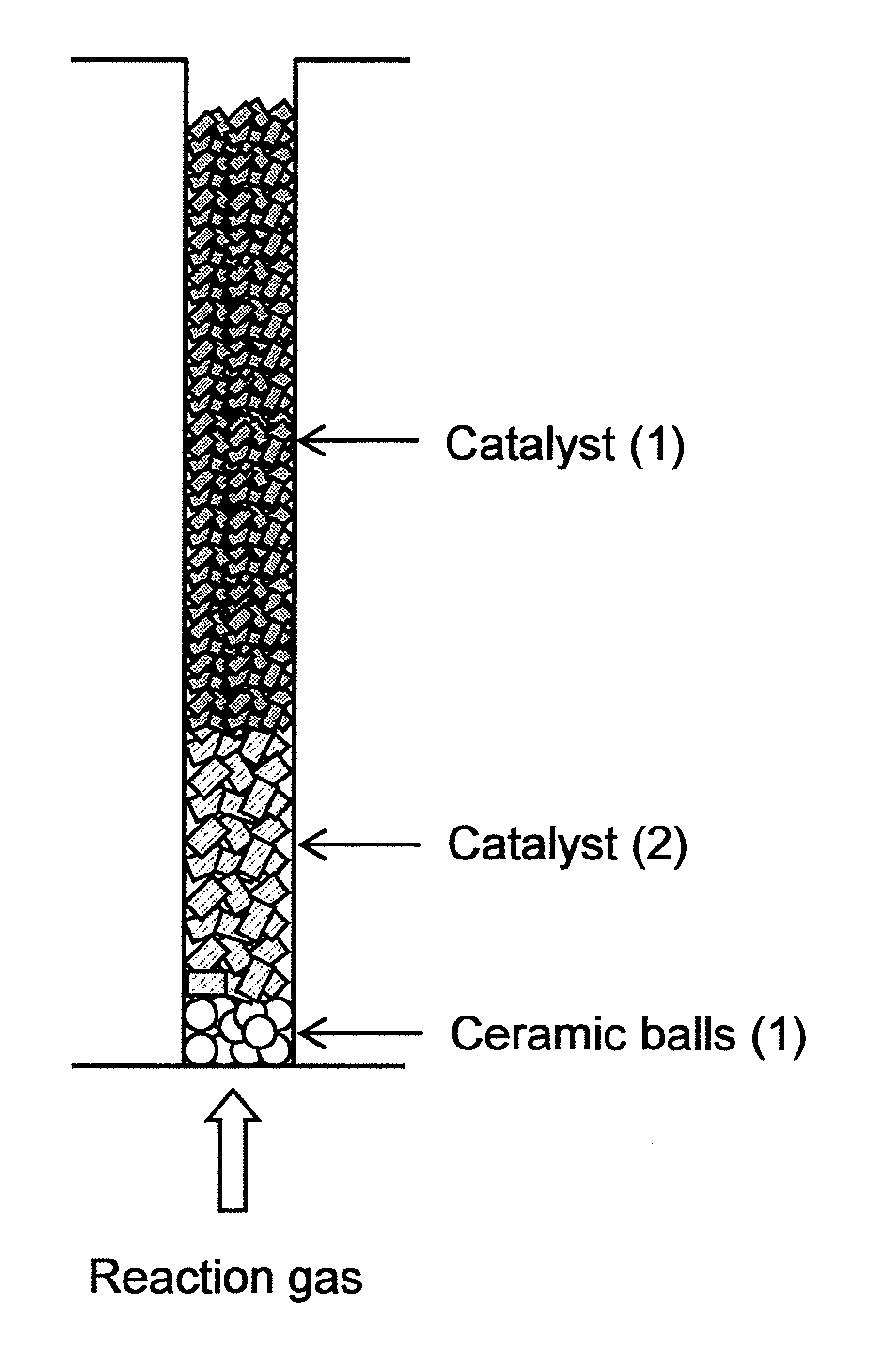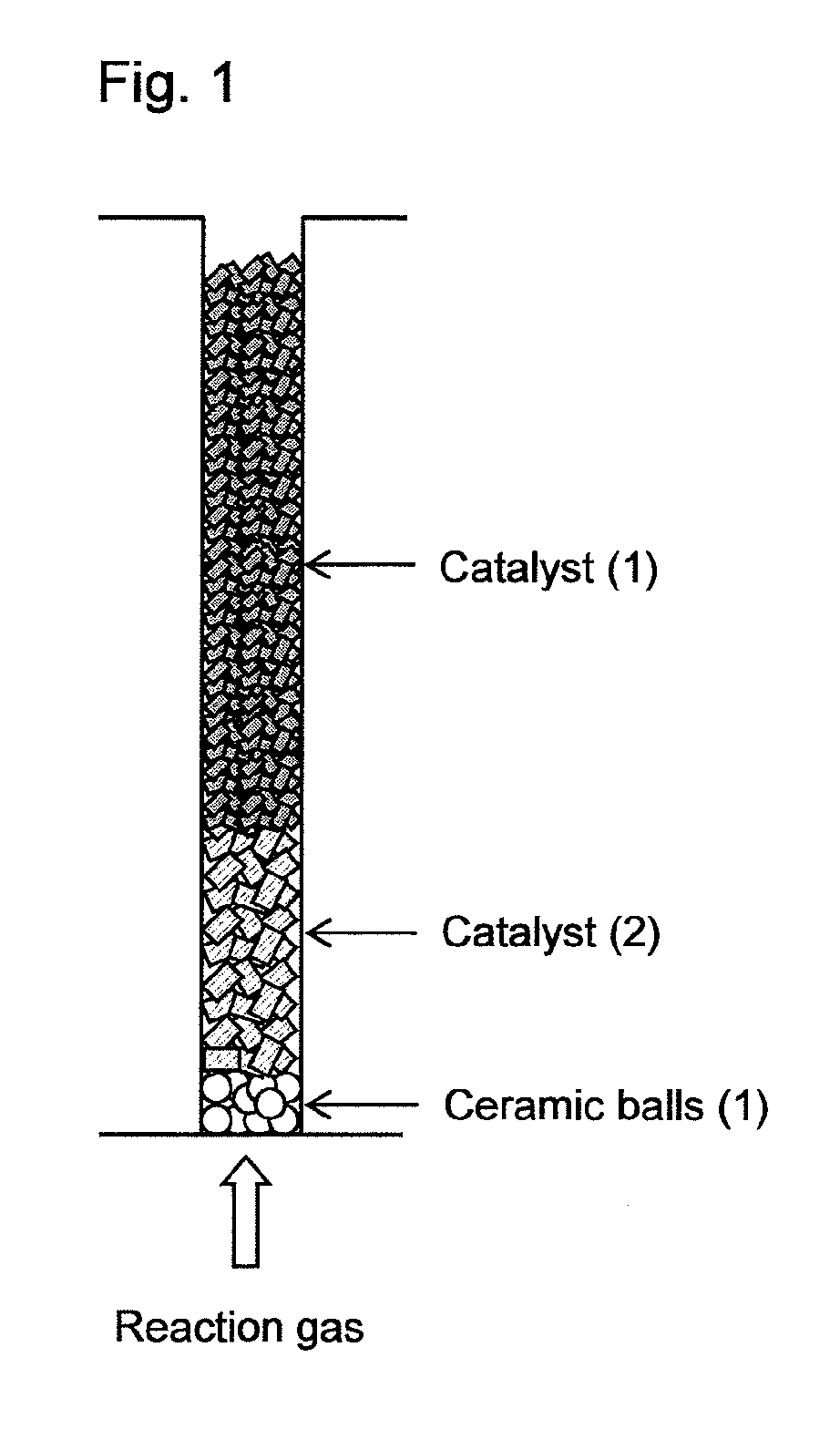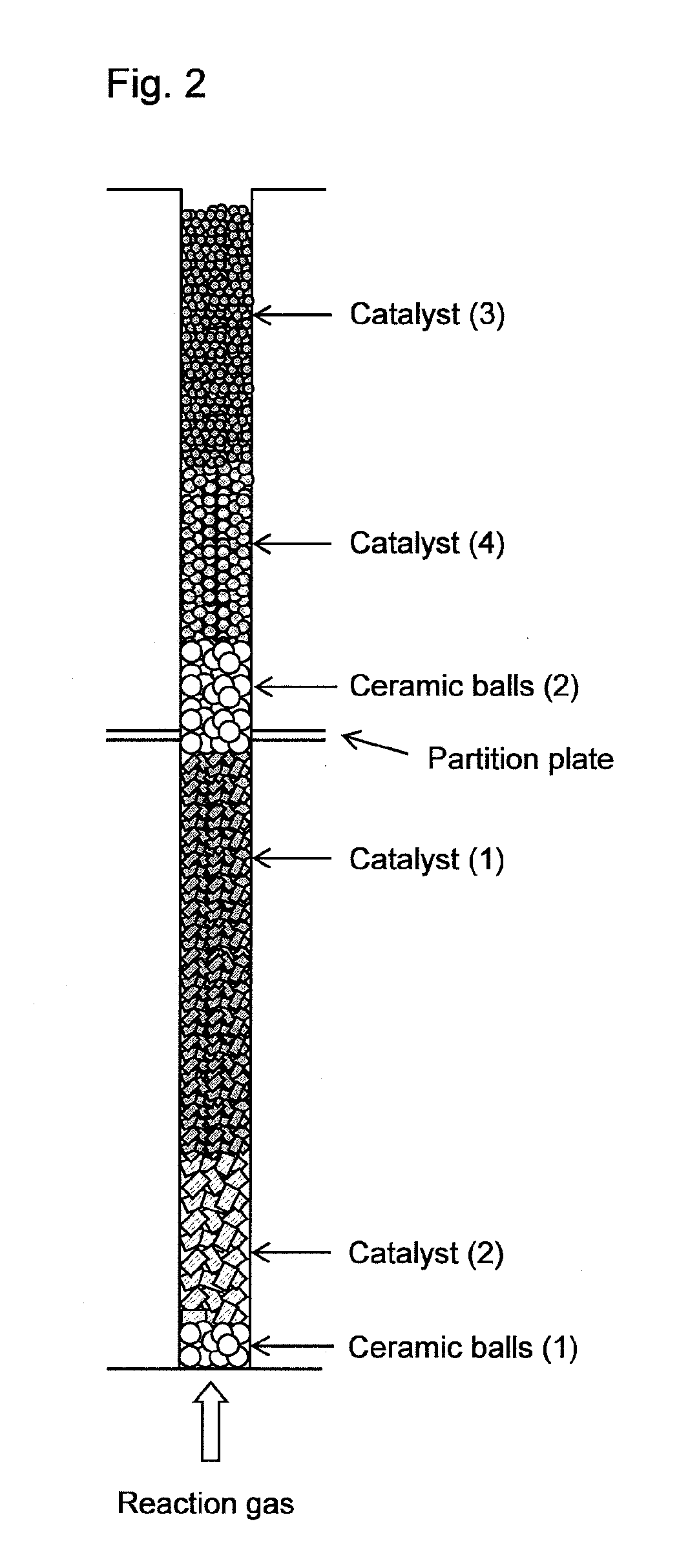Method of loading solid particles into a fixed-bed multitubular reactor
a multi-tubular reactor and solid particle technology, applied in the direction of physical/chemical process catalysts, liquid handling, metal/metal-oxide/metal-hydroxide catalysts, etc., can solve the problems of significant reduction of the amount of the catalyst to be engaged in the reaction, the impact of solid particle disruption, and the impact of catalyst life reduction, etc., to achieve stably the effect of reducing the variability of pressure loss among the reaction tubes, reducing the amount of solid particles, and reducing the impact of the effect o
- Summary
- Abstract
- Description
- Claims
- Application Information
AI Technical Summary
Benefits of technology
Problems solved by technology
Method used
Image
Examples
reference example 1
[0043](Preparation of Catalyst) 1,500 parts of distilled water was heated and stirred, and 500 parts of ammonium paramolybdate was dissolved therein to give a solution A. Separately, 398 parts of cobalt nitrate and 199 parts of nickel nitrate were dissolved in 500 parts of distilled water to give a solution B. Further separately, 25 parts of concentrated nitric acid (65%) was added to 100 parts of distilled water to give an acidic solution, and 137 parts of bismuth nitrate and 95 parts of ferric nitrate were dissolved therein to give a solution C. The solutions B and C were added dropwise to the solution A, and then, to the obtained mixture, 3.6 parts of potassium nitrate and 126 parts of tungsten trioxide were added. The thus obtained slurry was heated and stirred to vaporize the solvent. The resultant dry product was dried at 200° C. and then pulverized to 150 μm or less to give a catalyst powder. 30 mass % ammonium nitrate aqueous solution was added to the catalyst powder, and th...
reference example 2
[0044]A catalyst (2) was obtained in the same manner as in Reference Example 1, except that the product was extrusion-molded into a ring shape having an outer diameter of 8 mm, an inner diameter of 2.5 mm, and a length of 8 mm in Reference Example 1. The metal element composition of the catalyst (2) was same as that of the catalyst (1).
example 1
[0045]Into a fixed-bed multitubular reactor having 13,000 reaction tubes (reaction tube diameter: 25 mm, length: 3,500 mm) and a shell in which a heat medium is flowed and which covers the reaction tubes, ceramic balls having an average particle diameter of 8 mm, the catalyst (2), and the catalyst (1) were loaded, in this order from the bottom of the reaction tube, by dropping the respective solid particles from the tops of the reaction tubes so that the layer lengths comes to be 150 mm, 850 mm and 2,200 mm, respectively, as shown in FIG. 1. After loading each of the ceramic balls, the catalyst (2) and the catalyst (1), air of 20° C. was introduced from the tops of the reaction tubes at a linear velocity of 1.2 m / s and an introducing period of 12 seconds per reaction tube, whereby removal treatments of powdered particles generated during loading were performed. The removed powdered particles were captured by a bag filter installed to the bottoms of the reaction tubes. After the remo...
PUM
| Property | Measurement | Unit |
|---|---|---|
| linear velocity | aaaaa | aaaaa |
| length | aaaaa | aaaaa |
| humidity | aaaaa | aaaaa |
Abstract
Description
Claims
Application Information
 Login to View More
Login to View More - R&D
- Intellectual Property
- Life Sciences
- Materials
- Tech Scout
- Unparalleled Data Quality
- Higher Quality Content
- 60% Fewer Hallucinations
Browse by: Latest US Patents, China's latest patents, Technical Efficacy Thesaurus, Application Domain, Technology Topic, Popular Technical Reports.
© 2025 PatSnap. All rights reserved.Legal|Privacy policy|Modern Slavery Act Transparency Statement|Sitemap|About US| Contact US: help@patsnap.com



